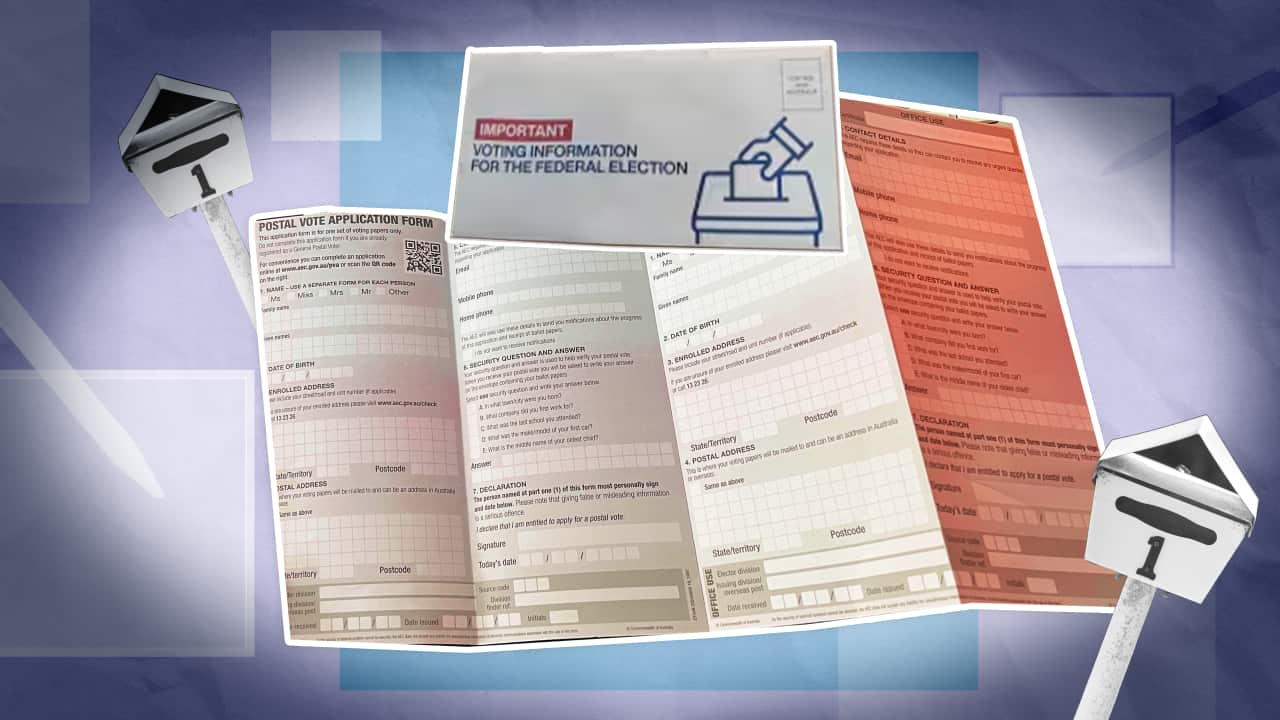Application forms for postal voting in Australia are turning up in people’s mailboxes but experts are warning voters about the risks of filling them in.
Ahead of the, envelopes labelled as ‘‘ are being sent to households.
Inside are unsolicited postal vote application forms often accompanied by information from a local political candidate.
The practice has become so widespread the Australian Electoral Commission (AEC) has sent out a warning urging voters to be cautious about the application forms, which can be received in the mail, via SMS or even email.
“They are reportedly used by political parties to collect data about voters before forwarding to the AEC,” the statement said.
The AEC said there was also concern about the timeliness of applications getting to the AEC.
How to vote — or something more?
While voters who choose to fill out the application forms do have their details registered for postal voting with the AEC, concerns have been raised about what happens to the personal information provided.
A report from the Joint Standing Committee on Electoral Matters on the 2022 election found voters who registered for postal voting using these types of forms could have had their data “harvested” by the party prior to their application being forwarded to the AEC, who is responsible to distributing postal vote papers ahead of election day.
A report from the Joint Standing Committee on Electoral Matters found the postal vote process had become “unfair and confusing to a number of voters”. Source: SBS News
The 2023 report said the data collected may be used for current or future communications.
The practice has also made the postal vote process “both unfair and confusing to a number of voters”, it noted.
Despite growing concerns, it is not illegal.
A Labor campaign spokesperson told SBS News: “the ALP complies with its legal obligations” around postal voting.
“Postal voting is an important part of our democratic system — it helps to ensure that every Australian is able to exercise their right, and meet their obligation, to cast a vote,” they said.
They declined to comment on questions regarding voters’ data.
SBS News has also contacted the Liberal Party for comment.
Some mailouts resembling official AEC material
Bill Browne, director of the Democracy and Accountability Program at The Australia Institute, is particularly concerned that some letters may be designed to resemble official AEC material, which may lead to confusion among voters.
“Anecdotally, there are reports that people are confused by this material, which is not helped by political parties using and designing their collateral in a way that makes it seem official or separate from the party’s brand,” he told SBS News.
In two examples SBS News obtained, the letters were delivered in envelopes marked as ‘IMPORTANT POSTAL VOTING INFORMATION’.
At first glance, the material could be mistaken for official AEC communications as there is no party branding, aside from the use of red and blue party colours.
In one case, a separate voting pamphlet included inside is printed in grey ink, with just one sentence in small writing indicating the voting pamphlet is authorised by the Liberal Party.
Experts, including Bill Browne at The Australia Institute, are concerned about the design of some postal vote applications distributed by political parties. Source: SBS News
In some instances, hotline numbers listed on these forms connect voters directly to a political candidate’s office rather than an independent election authority.
Accompanying the application form, voters may also receive a letter from the candidate, outlining their campaign message.
The design is something Browne is worried about.
“If political parties are deliberately separating these materials from their own branding, they’re doing so for a purpose — and that’s presumably to create the impression, at least among some recipients, that this material is more official or authorised than it truly is,” he said.
Browne said the bundling of postal vote applications with promotional party material is also worrying, with the committee recommending that postal vote applications not be bundled with other party political material.
“The committee heard quite varied, but serious concerns, including receiving how to vote material bundled with a postal vote application, made some people think that was instructions on how to vote,” he said.
“There are also privacy concerns — people worry that applications being returned to a political party might not be faithfully passed onto the AEC,” he said, adding that the committee recommended the law be changed so postal vote applications are sent straight to the AEC.
“It’s the very basics we might expect from a postal vote system, so there’s no doubt votes are being processed correctly and without privacy or security concerns,” Browne said.
What should I do if I receive these letters?
Browne encourages anyone worried about registering to vote to head straight to the AEC website.
“We have a very good independent Australian Electoral Commission. It’s one of the great strengths of Australian democracy … I’d always recommend heading straight to the AEC website and researching how to vote there, applying for a postal vote through the AEC and using that as the first port of call rather than material in the mailbox,” he said.
Browne said postal vote material is currently the “number one source” of complaints at the AEC.
“The bundling of very different types of content and sometimes presented [in] very different ways explains why the AEC says that this postal vote process is the number one source of complaints from citizens.
“I think the cleanest way to address this and to ensure confidence in the Australian electoral system remains high, is to very clearly separate out the postal voting system from any party political content.”
For the latest from SBS News, and .



